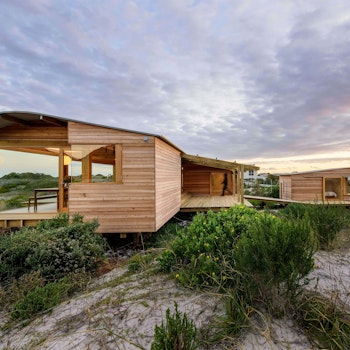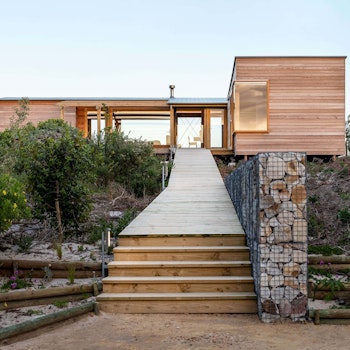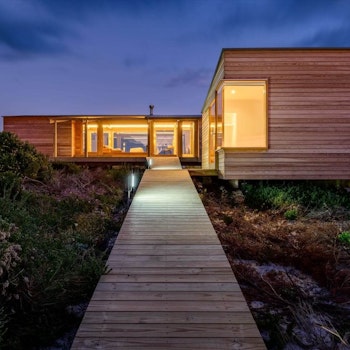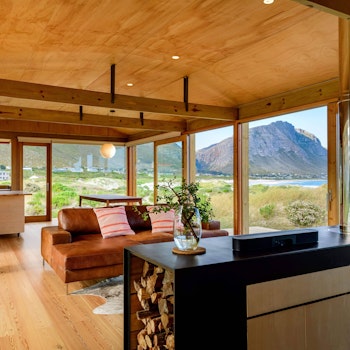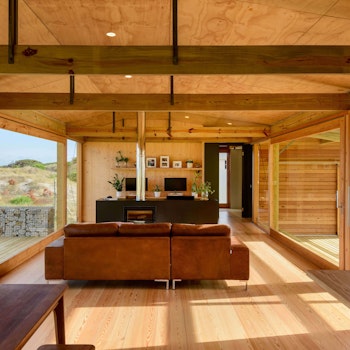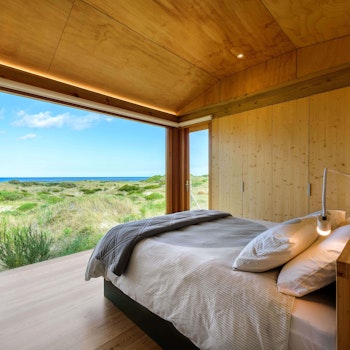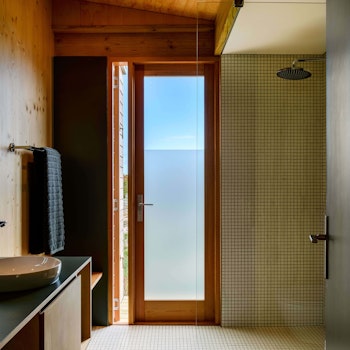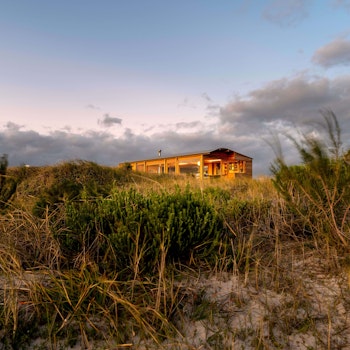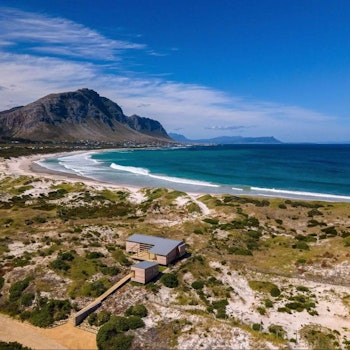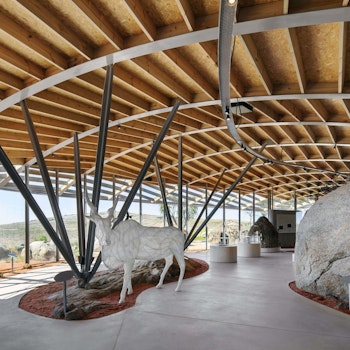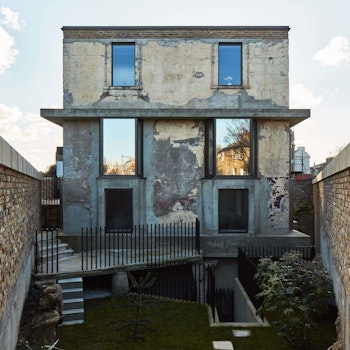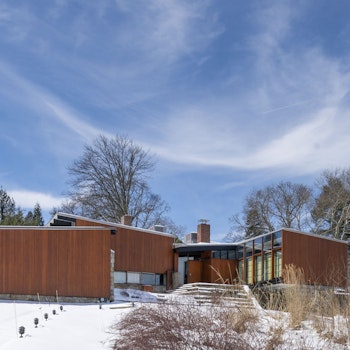ARCHITECT
KLG ARCHITECTS
The brief was for a home which sat comfortably within its windswept, natural environment. The undulating dunescape of this locale was the datum upon which this house grew, a project of section.
Building is the creation or addition of a new horizon. It may be situated within the landscape and ‘be of the hill, however it is always going to be a matter of inhabiting a previously natural environment. It is from this viewpoint that the decision was made in the beginning to create a building with two defining moments.
Firstly, a distinctive roofscape was conceived to provide protection from the prevailing wind conditions which during the summer months arrive strongly from the seaward aspect (SE). While the curved apex of the roofscape was designed to allow the wind to pass overhead and shelter the outdoor living space on the mountain-facing aspect. At the same time, it’s an extension of the undulating dunescape which encompasses the site and surrounds.
Secondly, the entire structure was raised off the terrain on gum-pole posts. This elevates the spaces off the sensitive dune environment, which allowed the ground conditions to rejuvenate after construction, and enabling small indigenous fauna such as mice and moles a conserved thoroughfare which would have been impeded had this been a solid wall-to-ground condition. For the post’s foundations, an innovative methodology was implemented, whereby all of the excavated soil was reused. No soil was removed from the site, instead it was employed to stabilize the fill around the posts, alongside its use within the footings’ concrete mix. The footings employed an unusual foundation with the use of barrels as permanent shuttering, thereby minimizing concrete spillage and contamination on the surroundings.
Embodied by these defining moments, the volumes for inhabitation and the guest pod grew from the dunes. The living spaces within are open and extend out to the views beyond, offering a space of refuge from the oftentimes volatile weather conditions beyond. These inhabitable zones are bisected by an elevated walkway hovering above the ground plane, a typology synonymous with the boardwalks of the local coastline. Creating a continuation of the axis from the mountain to the ocean.
Timber was chosen as the primary structural and finishing element for its sustainable properties, which was a continued reflection of the sensitive approach we took from the conceptual stage influenced by the found conditions on site. The occasional gabion elements provide a tactile grounding to the land and form a means of anchoring defining moments, namely along the walkway axis and the outward facing deck. The timber was left unfinished to allow it to grey and recede tonally into the landscape. In addition to the visual and tactile properties timber contains, it also reduces building time, thereby minimising disruptions to the sensitive site; and offers the flexibility required to readily accept any potential extensions over time.
source: KLG Architects
YOU MAY ALSO LIKE


